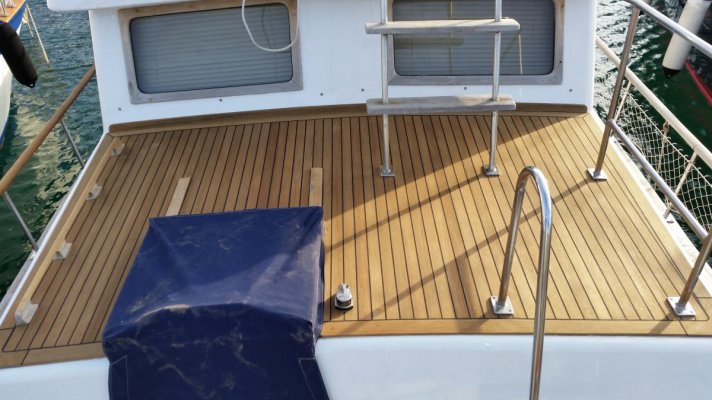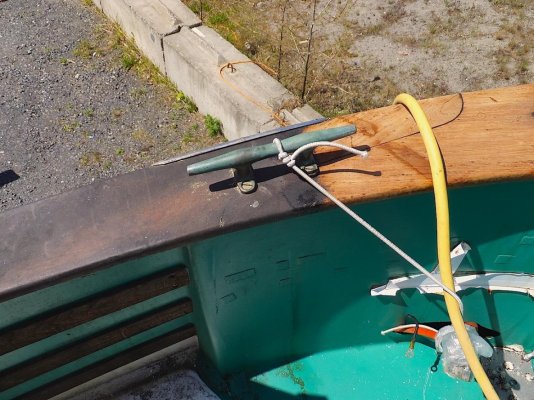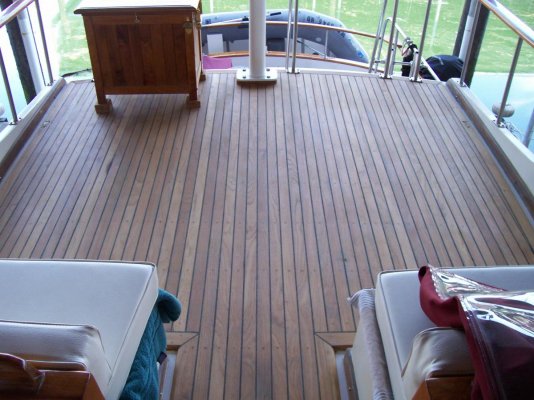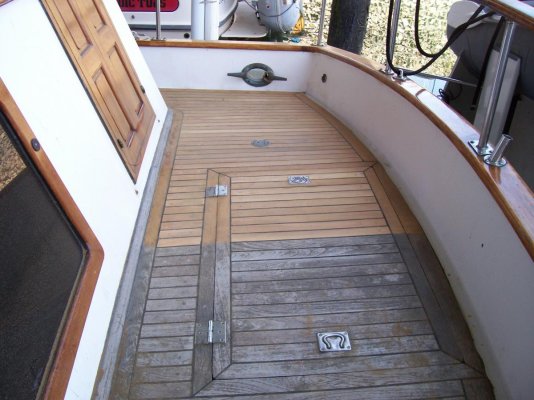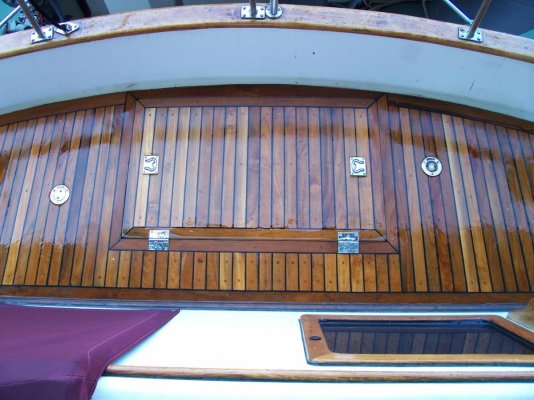sailtones
Veteran Member
- Joined
- Jan 22, 2013
- Messages
- 97
- Location
- Montenegro
- Vessel Name
- Nostra Signora
- Vessel Make
- Marine Trader CHB 34DC
A revamp of a well trodden discussion here!
Having spent years as a professional charter and private yacht skipper, I vowed and declared that on my boat, I would let all the teak go a weathered grey and be done with it.
However, after two years of that grey look, the need to take pride in my teak has resurfaced. Firstly reason is simple ascetics, nothing makes a boat look cleaner than well maintained teak, and second is the fact that my main decks are reaching the end of their life so this last revamp is a final push to maintain the teak for as long as possible.
In the past on crewed boats, it was always easy to maintain the teak decks with nothing more than weekly cross grain scrubbing, and an oxalic acid scrub every couple of months. But the 'crew' is the important point here.
This time around, because the crew consist of just me, I am using the products available to me in my location in an effort to reduce ongoing labor.
Welcome To Teak Wonder
Anyone ever used it?
Having spent years as a professional charter and private yacht skipper, I vowed and declared that on my boat, I would let all the teak go a weathered grey and be done with it.
However, after two years of that grey look, the need to take pride in my teak has resurfaced. Firstly reason is simple ascetics, nothing makes a boat look cleaner than well maintained teak, and second is the fact that my main decks are reaching the end of their life so this last revamp is a final push to maintain the teak for as long as possible.
In the past on crewed boats, it was always easy to maintain the teak decks with nothing more than weekly cross grain scrubbing, and an oxalic acid scrub every couple of months. But the 'crew' is the important point here.
This time around, because the crew consist of just me, I am using the products available to me in my location in an effort to reduce ongoing labor.
Welcome To Teak Wonder
Anyone ever used it?


